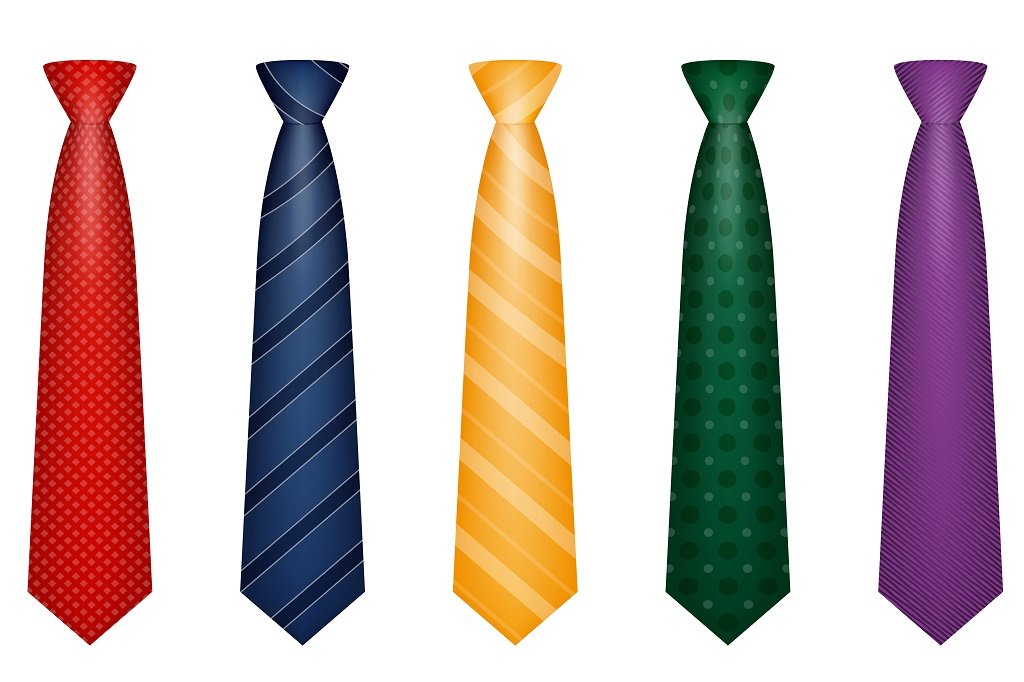Whether you are in a formal or a slightly more casual outfit, it is the tie that lends color and lets you add a dash of individuality to your dressing.From the Tailored look down to the Casual, our Style Scale offers guidelines that tell you which tie to wear and when and most importantly whether to wear one at all.You wear a tie in the upper layers of the Tailored, Softly Tailored and Casual Tailored levels of the Style Scale . The guidelines of the particular level of the Style Scale apply to the purchase of a tie too.When it comes to buying a tie, tailoring is the standard element that applies to all ties. Fabric, color and pattern are the dynamic elements that change based on the level of the Style Scale.
Tailoring
The standard guideline is that ties are between 52 and 58 inches long and between 3 and 4 inches in width. Actual length varies based on your height – taller you are, longer the tie. The tie must be fully lined with a stiffer fabric since that is what holds the fabric and gives it bulk. Wool is ideal. Also, the tie cloth must cut across the fabric, what is called the bias. This is what allows the tie to fall straight without curling. Bring the suit or shirt for which you are buying the tie. That’s essential or you’d be buying a tie that does not complement the color or pattern of the shirt or jacket.
Fabric
100% silk is the ideal fabric for ties, but don’t fret if you can’t afford one or would like to try out others. You could use 100% linen or cotton or even a light polyester mix. Just ensure that the fabric is strong. If not, you will be left with too small a tie knot that just isn’t the right thing to do. Knits and twills are other fabrics that work just fine in a tie. You can use any of these fabrics through the Tailored, Softly Tailored and Casual Tailored levels of our Style Scale.
Color
Color of the tie differs based on the jacket and shirt you are wearing, which means the Style Scale rules apply to it too. At the highest Tailored level with navy blue, grey or charcoal suits, ties of darker colors are the norm. They must complement the jacket. This means deep blue, burgundy, red and such dark colors are appropriate. Typically, they contrast the lighter colored shirts used at this level.When it comes to the Softly Tailored and Casual levels, you can ease up on the color going for the peaches and yellows.
Pattern
The rule for formal dressing is to avoid cartoons and bright, bold designs on a tie whichever level of the Style Scale you are on. It is only when you are in the creative areas that you could try out bolder designs. But when involved in non-creative work areas, stick to the tried and tested ones.Tie patterns with the Tailored look follow the rule of no curves. They can be plain, or with lines or small geometric patterns. While the tie’s primary job is to complement the jacket, make sure that it does not clash with the shirt. This can happen particularly with striped shirts where the color and pattern may clash with that of the tie. The safe bet is to use plain ties with no pattern in such cases. But, nothing must stop you from using striped ties or with small design, once you make sure that the combination complements each other.Avoid wearing stripes on all the three items in a single outfit – jacket, shirt and tie. Two is the maximum your attire can take. When matching the tie with the shirt, avoid having stripes in the same direction. If the shirt is a vertical striped one, use a diagonally striped tie. Also, the stripes of each should be of a different size. The idea is to contrast the pattern of the tie with that of the shirt. Don’t think for a moment that just because the shirt is striped you cannot use some of the bolder tie designs. You can go for paisleys, polka dots and more, but make sure that the colors are coordinated.One final rule is that the tie should not blend with the shirt, it must contrast. It should be darker and should not match the shirt.When it comes to the Softly Tailored and Casual Tailored levels of the Style Scale, you move gradually towards curved patterns. You can also go for rep stripe, guardsman, Kennedy stripe, twill stripe, geometric retro, repeats, foulard, medallion, pin dot, polka dot, graph checks, club, paisley, glen plaid, jacquards, floral. What do any of these names mean for ties? Look out for our future blog post which goes into the detail.The rule is, the more casual you go on the Style Scale, the bolder you go with the tie bringing in paisleys and florals.This helps you tie the knot with the right tie.
